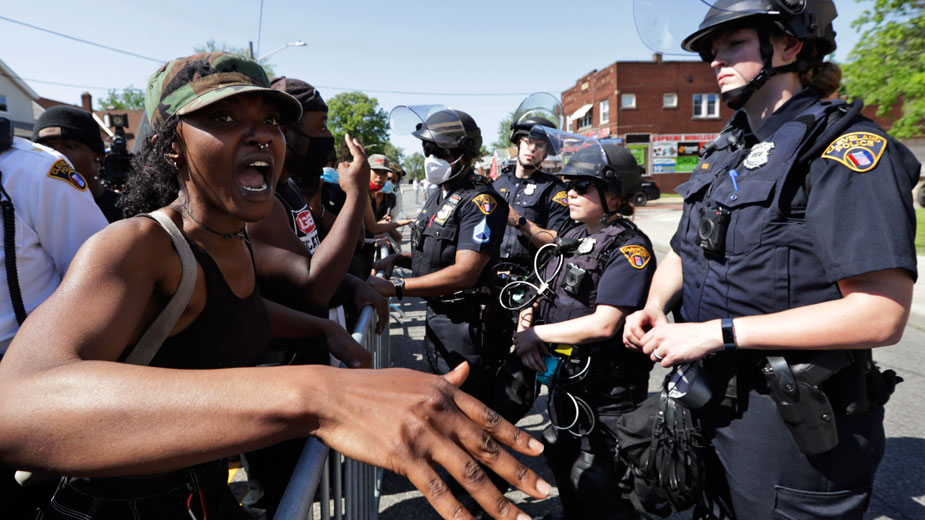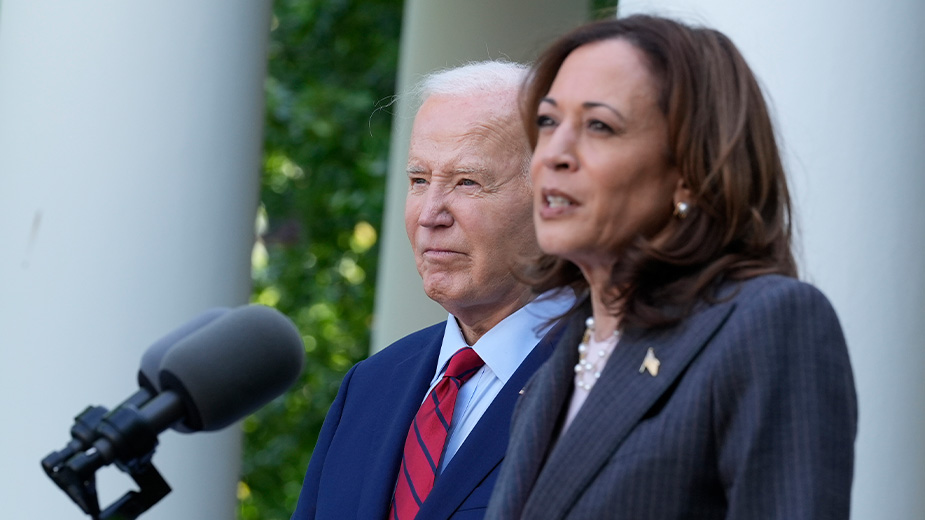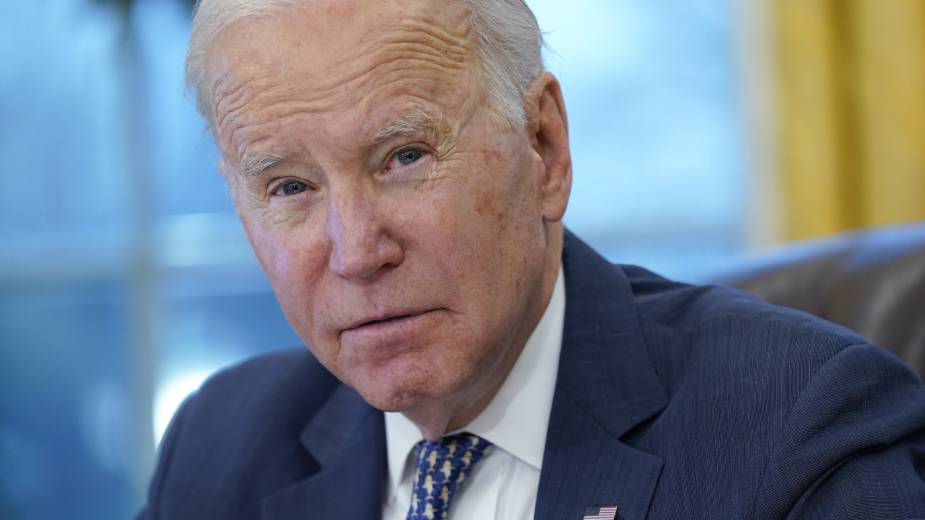DeWine Announces New Law Enforcement Reform Efforts
Updated 4:13 p.m., June 9 | DeWine response to defunding the police.
YOUNGSTOWN, Ohio — On the day of the burial of George Floyd – the Minnesota man killed May 25 as a police officer pressed a knee on his neck – Ohio Gov. Mike DeWine announced new measures to promote law enforcement reform during his daily briefing Tuesday.
Floyd’s death sparked global protests over police brutality and racial injustice. Last week, DeWine pledged to address those issues at the state level and is calling on all Ohio law enforcement offices to participate.
The DeWine administration is working with the Collaborative Community-Police Advisory Board to encourage all state law agencies to get certified for Group 1 standards as established during former Gov. John Kasich’s administration. Those standards include use of force, including deadly force, and hiring and recruitment, DeWine said.
“Having a diverse police force is certainly important,” as is placing human life as the highest priority, the governor said.
Currently, 79% of Ohio law enforcement officers work for an agency that has voluntarily complied with these standards or is in the process of getting certified, he said. However, the number of certified law enforcement agencies make up little more than half of all agencies in the state. To date, more than 400 agencies have not sought the certification, DeWine said.
“Now there may be many reasons why these departments have not done that,” DeWine said. In some cases, I’m sure that they would say their standards are just as good if not higher.”
That said, DeWine encouraged those 400-plus police departments in Ohio that aren’t certified to begin the process, and the state will work with them to ensure compliance. DeWine directed the Department of Public Safety’s Office of Criminal Justice Services, which oversees the certification process, to reach out directly to every police station in the state that doesn’t meet the standards and assist them in any way they can.
To see which departments are in any phase of the certification, view the latest Law Enforcement Certification Report by the Ohio Department of Public Safety by clicking here.
In Mahoning County, 13 of the 22 law enforcement agencies in the county are in some phase of the certification, according to the report. Of the 893 officers in the county, 751 (84%) are in any phase of certification. According to the 2010 census, there are 238,823 residents in Mahoning County, of which 80% are covered by agencies in any phase of certification.
Those agencies include police departments in Austintown, Beaver Township, Boardman Township, Canfield, Goshen Township, Jackson Township, Mill Creek MetroParks, Poland Village, Sebring and Springfield Township, as well as the Youngstown Police Department, Youngstown State University Police Department and the Mahoning County Sheriff’s office. All agencies are at least Group 1 certified, except for the Poland Village department, which is in process of certification.
Noncertified agencies include police departments in Campbell, Coitsville Township, Craig Beach, Lowellville, Milton Township, New Middletown, Poland Township, Smith Township and Struthers.
Trumbull County has 12 of its 23 law enforcement agencies in any phase of certification, covering 49% of the county’s population of 210,312. Of the 509 officers in the county, 208 (41%) are in any phase of certification.
Those agencies include police departments in Bazetta Township, Howland Township, Hubbard City, Hubbard Township, Liberty Township, Lordstown Village, McDonald, Niles, Vienna Township, Warren Township, Weathersfield Township and West Farmington. All agencies are at least Group 1 certified, except for Lordstown Village, which is in process.
Noncertified agencies include the Trumbull County Sheriff’s office, as well as police departments in Braceville Township, Brookfield Township, Champion Township, Cortland, Fowler Township, Girard, Hartford Township, Kinsman Township, Newton Falls and Warren.
Of the 17 law enforcement agencies in Columbiana County, the Salineville Police Department is the only department with officers in the Group 1 certification process. None of the officers in the department are certified, according to the report.
The Salineville Police Department accounts for nine officers in the county in any phase of certification, representing 4% of the 249 officers in Columbiana County. The department covers 1% of the county’s population of 107,841 residents.
Noncertified agencies include police departments in Center Township, Columbiana, East Liverpool, East Palestine, Hanoverton, Leetonia, Lisbon, Liverpool Township, New Waterford, Perry Township, Saint Clair Township, Salem, Salem Township, Washingtonville and Wellsville, as well as the county sheriff’s office.
Other standards outlined by the collaborative include minimum standards for community engagement, the use of body cameras, bias-free policing, employee misconduct and telecommunicators. The DeWine administration added another tier of new minimum standards on law enforcement regarding pursuit by automobiles.
“The agencies that have decided to become certified in these additional standards are showing strong leadership in Ohio, and are showing their communities that they are in fact listening,” DeWine said.
On Tuesday, the governor announced he is advising the collaborative to develop additional minimum standards on law enforcement’s response to mass protest. He is asking the collaborative to examine such issues as:
- At what point measures like tear gas, pepper spray and non-lethal projectiles become necessary?
- What tactics and techniques are best practices for dealing with a crowd that is failing to disperse?
- How can law enforcement prevent members of the media from being injured?
- When do tactics become excessive for a given situation?
DeWine clarified the state isn’t looking to give “the small number of violent protesters” a free pass, he said.
“Let me be clear. When protests morph from peaceful to violent, law enforcement must be empowered to act,” he said. “When law enforcement witnesses physical violence or property destruction, they must be ready and able to react.”
However, he says the state wants peaceful demonstrators to feel safe when exercising their First Amendment rights, and for the public to be protected against violence and destruction of property. DeWine says the new standards will be helpful in coming up with new, uniform standards throughout the state, and he will “welcome anyone’s input in regard to that.”
DeWine also announced new efforts to encourage more minorities and women to become members of the police force. Through the use of existing resources, the state is creating the Office of Law Enforcement Recruitment within the Office of Criminal Justice Services.
While recruiting more minorities and women into law enforcement isn’t a new concept, and many departments “have done a phenomenal job” in ensuring a diverse force, DeWine says more work can be done. Through the new office, the state will help local agencies with recruitment and retention.
The administration has been in contact with the Ohio Mayors Alliance and will work closely with the group, as well as with Ohio sheriffs and chiefs of police, on this initiative, he said.
During the media’s question-and-answer period, one reporter said some reports show that diversifying a police force doesn’t necessarily fix the issue of excessive use of lethal force. When asked why he thought diversifying state police departments will succeed in that regard, the governor responded that a police force “should reflect what the community looks like,” adding that his executive team in the administration is diverse “in many ways,” not just racially.
“I think strength comes from diversity,” DeWine said. “I think as a basic principle, whatever the organization is, it’s better if it has diversity; has different points-of-view. People have different backgrounds, they grow up differently.”
As governor, DeWine says these are changes he can effect quickly. Many other changes in law enforcement reform, however, will require legislative action and the administration is working with the general assembly on other ideas for reform, he said. The governor’s office is also working with local and state law enforcement agencies, elected officials and community organizations on the effort, he said.
“This is not the end. This is just the beginning of our focus on this,” DeWine said. “I intend to stand here again in the near future detailing even more changes.”
While DeWine supports making changes to law enforcement standards, the governor confirmed that he is not in favor of defunding the police departments in the state.
“I think that would be absurd,” he said. “I can’t imagine what people are thinking about defunding the police. We need police, we need fire, we need emergency responders. These are the people who protect us; they protect our lives. And if something happens, we want to be able to call the police.”
Pictured: A protester voices her concerns to a Cleveland police officer during a rally for black lives, Tuesday, June 2, 2020, in Cleveland. The City of Cleveland extended its curfew through Tuesday night after riots broke out Saturday over the death of George Floyd, who died after being restrained by Minneapolis police officers on May 25. (AP Photo/Tony Dejak)
Copyright 2024 The Business Journal, Youngstown, Ohio.



